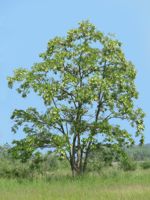Mon-Fri 9am - 5pm Mountain time
Black Locust vs Ottawa 3 Rootstock
Robinia pseudoacacia
Robin crab X Malling 9 ((Malus baccata X Malus sylvestris) x Malling 9)
NOT AVAILABLE THIS SEASON - MIGHT RETURN
Black Locust is an attractive tree. Its distinctive leaves are made of about a dozen bright green leaflets. It also notable for its fragrant white flowers, which smell of citrus.
Black Locust can grow in many situations, but prefers dry areas with lots of sun. It is robust and is an excellent choice for establishing shade in dry, open areas.
Important note: Much of the Black Locust is toxic to humans and livestock, including seeds, bark, and leaves.
Ottawa 3 Rootstock is the most dwarfing rootstock to come out of the cold-hardy breeding program by the Agricultural Canada Research Station in Ottawa. It produces dwarf to semi-dwarf trees that are 45-55% of standard size. Due to its superior hardiness, it is well adapted to Canadian weather conditions.
It originates from Malling 9 (M.9) and the Robin Crab and is considered more dwarfing than Malling 26 (M.26) and more vigorous than Malling 9. Ottawa 3 Rootstock is very productive and bears fruit early, often requiring structural support when young.

